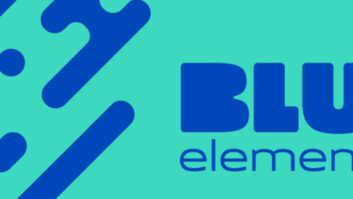Will your Ultra HD Blu-ray player have to be connected to the Internet to play 4K discs? How will consumers transfer 4K content from discs to portable devices? Will Ultra HD Blu-ray players play DVDs and CDs? And will players and discs accommodate content created with Dolby Vision high dynamic range (HDR) technology.
The Blu-ray Disc Association (BDA), which promotes the Blu-ray Disc format, answered those questions and more on Thursday when two BDA executives held an online roundtable to take questions from reporters and reviewers.
The BDA execs included Benn Carr, who chaired the BDA’s UHD task force. He is VP of corporate strategy and development at DTS. The second exec was Ron Martin, the vice chair of the BDA’s U.S. promotions committee. He is VP/director of Panasonic Hollywood Lab.
Here are some of the key points that they made:
Positioning: Compared to 4K streaming services, 4K Blu-ray players and content will be positioned as premium experiences. The executives cited the format’s 100Mbps “constant and guaranteed” data rate compared to average home-network speeds of less than 5Mbps. The experience will also be uninterruptible because it doesn’t depend on the vagaries of Internet connections and home Wi-Fi networks. And, unlike the launch of Blu-ray, the first players won’t be troubled by slow disc-loading times.
For early-adopter eyes only? The execs don’t believe the appeal of 4K Blu-ray will be limited at launch to early adopters, as was the case with the Blu-ray launch. A broad range of consumers will be attracted to 4K Blu-ray because they are already aware of 4K TVs, 4K’s advantages, and the added features that physical media provide, including interactive features.
Content availability: The BDA expects announcements of disc titles at CES. On the hardware front, Samsung and Panasonic have already announced player plans, with Panasonic planning November availability in Japan and Samsung showing a prototype due next year.
Disc compatibility: Ultra HD Blu-ray players are required to play back 2D 1080p Blu-ray discs, but as is the case with current Blu-ray players, playback of CDs and DVDs isn’t mandatory. Nonetheless, the executives expect all 4K players will offer CD and DVD playback, as do all current Blu-ray players.
Playback of 3D 1080p Blu-ray discs is a player option, but you won’t see 3D 4K content on Ultra HD Blu-ray discs. The Ultra HD Blu-ray standard doesn’t include 3D on 4K discs.
Separately, the Ultra HD Blu-ray standard does not require a player to be connected to the Internet to get authorization to play a disc. Studios, however, have the option to remotely store encryption keys, thus requiring an Internet connection. That’s not expected to be common practice, though it could be useful in controlling the distribution of early release discs.
Video performance: The more efficient HEVC codec, combined with higher capacity movie discs (66MB and 100MB compared to Blu-ray’s 25GB and 50GB) will allow for 3840 by 2160 resolution compared to Blu-ray’s 1920 by 1080 resolution. The Ultra HD Blu-ray format will also accommodate 10-bit color versus 8-bit color and high dynamic range (HDR) content.
The format supports 100Mbs peak bit rates, compared to Blu-ray’ s 40Mbps, and frame rates up to 60 fps, up from 24 fps.
Color gamut: Players are required to support the ITU’s BT 2020 color range, which exceeds the DCI-P3 range of colors delivered by digital cinemas, which in turn exceed the BT.709 gamut that current Blu-ray discs can deliver. Players must also be able to reproduce the BT.709 gamut.
TVs capable of displaying 2020 gamut will begin to appear this year and next. One studio has already released a theatrical movie with 2020 gamut.
High Dynamic Range (HDR): HDR is required on players and optional on discs. Players and discs supporting HDR must use the baseline 10-bit SMPTE 2084 HDR standard. Optional BDA-approved HDR technologies from Dolby and Philips can accompany 2084 on a disc, but players aren’t required to recognize the Dolby and Philips technologies.
Copy and Export: This optional feature set, previously called Digital Bridge, consists of two main options. First, players can incorporate embedded hard drives to make and store bit-for-bit copies of multiple 4K discs, including bonus content and interactive features. The intent is to make individual movies accessible without requiring people to get off the couch to browse through a stack of discs. Panasonic’s first player, due in Japan later this year, will incorporate a 3TB hard drive. Samsung also plans a model with hard drive.
The export part of this optional feature set will let disc purchasers obtain copies of a title for playback on portable devices, if the content provider approves. Consumers, however, won’t be able to transfer a copy from their player’s hard drive directly to a portable device. Instead, consumers will engage with third-party services, as they do now for UltraViolet copies of 2D Blu-ray discs. Only the movie itself, soundtracks, and subtitles will appear in the copy.
Third-party services such as UltraViolet and Vidity could work with studios to implement the capability, as could Apple’s iTunes.
Audio: The requirements and options are the same as they are for 2K Blu-ray discs and players.
Other: The spec doesn’t require two HDMI outputs on players, and it allows for BD Live-type interactive content on 4K discs at the content providers’ option.













